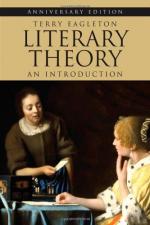|
This section contains 2,451 words (approx. 7 pages at 400 words per page) |

|
Chapter 5, Psychoanalysis Summary and Analysis
The book so far has focused on the political and economic developments of the twentieth century as the dominant influences on philosophy and literary theory. However, this focus must be balanced with an understanding of the changes that went on at the personal level for many people living during this period, and Sigmund Freud is the pioneer of that field. Freud recognized in all people a conflict between two motivations—the pleasure principle, which makes a person want to do what is pleasant to him, and the reality principle, which makes a person want to do what is necessary to survive—namely, work. The reality principle forces a person to repress their pleasure principle, but undue repression of this can lead to what Freud calls neurosis. As all human beings are forced to work, all human beings...
(read more from the Chapter 5, Psychoanalysis Summary)
|
This section contains 2,451 words (approx. 7 pages at 400 words per page) |

|




